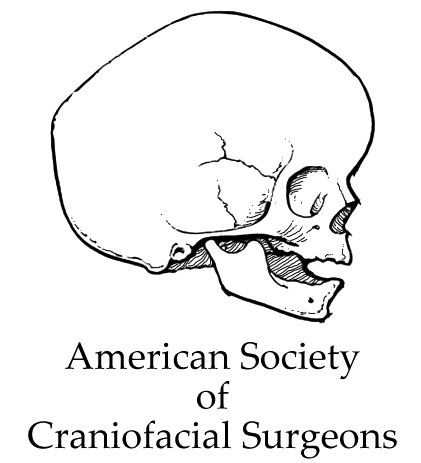Droopy Eyes
Drooping eyes can add years to your face and make you look older than you are. Apart from making you look constantly sleepy and tired, they also cause a host of medical problems including loss of or impairment in vision. Immediate treatment can help improve your quality of life.
Dr. Christopher C. Chang, MD is one of the most experienced plastic surgeons in Washington DC and Maryland and he has worked with hundreds of patients to help them recover from a wide range of cosmetic and medical facial conditions. His artistry, coupled with his extensive knowledge of facial cosmetic procedures makes him the perfect choice for your plastic surgeon.
Dr. Chang is a firm believer in retaining and enhancing the natural beauty of his patients. All of the treatments he provides are designed to be personalized for your specific cosmetic or medical requirements. With him by your side, you can be assured of natural and youthful results.
If you or a loved one requires immediate treatment for cosmetic or medical facial conditions, feel free to contact Dr. Chang for a consultation. You can schedule your appointments either via call or through email. We look forward to helping you start a new and beautiful life.
What Causes Droopy Eyes?
Droopy eyelids are also called ptosis or blepharoptosis and are a result of both cosmetic and medical conditions. Some of the main causes of droopy eyes are:
Age
Also called Aponeurotic ptosis, this is a condition where the upper eyelids droop due to age. Over time, the muscles and tissues underneath our eyes wear-out, stretch and lose their elasticity. This causes the upper eyelid to droop over the eyes. Dermatochalasis is one such connective tissue disease that affects the eye and causes it to droop.
Birth defect
Congenital ptosis is a condition where the fetus develops ptosis inside the womb as a result of a genetic anomaly and is born with a drooping eye. Usually, no treatment is prescribed if the condition is mild. However, if the drooping upper eyelid covers the baby’s eye and results in impaired vision, surgery is prescribed.
Nerve damage and disorders
Several nerve conditions such as Myasthenia gravis, Homer’s Syndrome and brain tumor can damage the nerves that connect the eyes and the face. This impairment of neural connections can lead to the development of droopy eyes. In fact, any medical connection that stops/reduces blood flow to the face and the eyes may exhibit ptosis as one of its primary symptoms.
Muscle injuries
Sometimes, facial muscle injuries due to accidents can cause multiple problems including ptosis. Congenital genetic conditions such as Oculopharyngeal muscular dystrophy and conditions like the progressive external ophthalmoplegia in young adults can also affect eye movement and lead to drooping in both eyes.
Some other less common reasons for ptosis can be:
- Lesions or infection in the eye
- Result of a previous blotched eye surgery
- Facial palsy
- Allergies to cosmetics or eye medication
- Alcohol abuse, drug abuse and smoking
- Fatigue and eye strain
Treating Drooping Eyelids
Treatment of ptosis can be done through both surgical and non-surgical techniques. Dr. Christopher C. Chang, MD has years of experience performing both surgical and non-surgical facial procedures on patients. His extensive experience has helped him hone his skills and you can rely on him to provide you with top-quality care.
Non-surgical treatments for droopy eyes
Botox injections
The Botulinum toxin has been a traditionally favored technique for multiple cosmetic facial procedures. From tightening your skin to making it look young and fresh, Botox has been found to provide a host of benefits to users.
Botox injections have also proven to be highly successful for treatment of droopy eyes. The toxin blocks the neural impulses which make your upper eyelids droop, thereby stopping all movement in your eyelids. Once injected, the Botox freezes the unwanted drooping movement of your eyelids, giving it a firm look.
Here, Dr. Chang examines your eyes to determine how much Botox to use to reduce the droopiness in your upper eyelid. He will also identify the points where he will be injecting the Botox.
This is an outpatient procedure and you will need to come into the doctor’s office for treatment. Click here for more information on BOTOX.
Dermal fillers
Although similar to Botox, dermal fillers use Hyaluronic acid to reduce the droopiness in your eyes. These acids contain elastin and are designed to stimulate the production of more elastin in your eyelids, thereby plumping them up and making them firm. These fillers will contour your eyes and fill out the hollow within your eyelids, reducing the chance of any drooping.
Dr. Chang will inject dermal fillers after examining your eye and after identifying the areas where the fillers need to be injected. Just like the Botox, this is an outpatient procedure too and will be performed in the doctor’s clinic.
Surgical treatments for droopy eyes
Eyelid surgery
Upper eye bag removal surgery, also called blepharoplasty, is one way of treating ptosis. Here, Dr. Chang will make an incision along the natural lines of your upper eyelid and remove all the sagging and old tissues and muscles that lie underneath. He will then tighten the skin and stitch-up the incision using skin-friendly stitches.
This surgery is also helpful in reducing any droopiness or bags that form below the eyes. From reducing crow’s feet to removing excess fat from around your eyes, eyelid surgery can treat a host of facial conditions. Click here for more information on Eyelid Surgery.
Facelift
Rhytidectomy is a procedure that can be used to tighten the skin and give it a young, firm and supple look. Whether you have a sagging jowl or bands of fat on your face, you can trust a facelift to rid you of your cosmetic problems.
Facelifts are also great to reduce droopy eyes. Here, Dr. Chang will identify the areas of the eyes where the skin needs to be lifted and will incise those areas, tighten the skin and close the incision.
Each treatment performed by Dr. Chang is highly couture and is designed for your specific condition. Similarly, the post-surgical recovery plan too is created based on how you are post-surgery. Be sure to follow all of the doctor’s instructions for a successful and speedy recovery. See more about Dr. Christopher Chang’s Facelift Procedure here.
Dr. Christopher C. Chang, MD is one of the most experienced and renowned plastic surgeons in the United States. Choose him for superior-quality treatment and very natural results. Feel free to contact him for more information.






